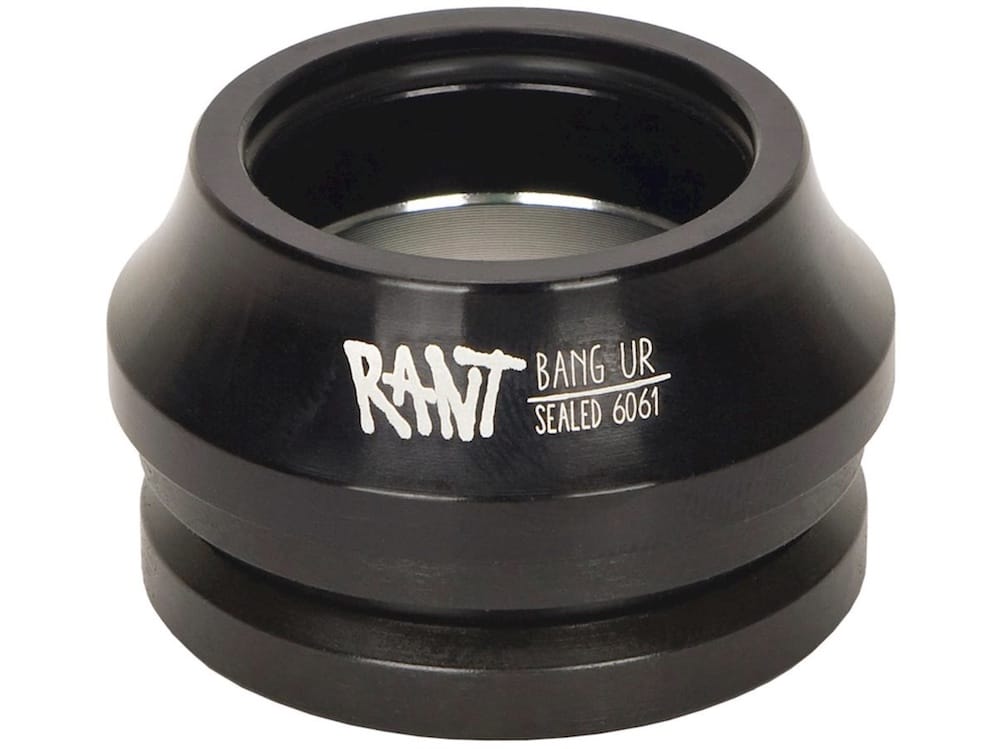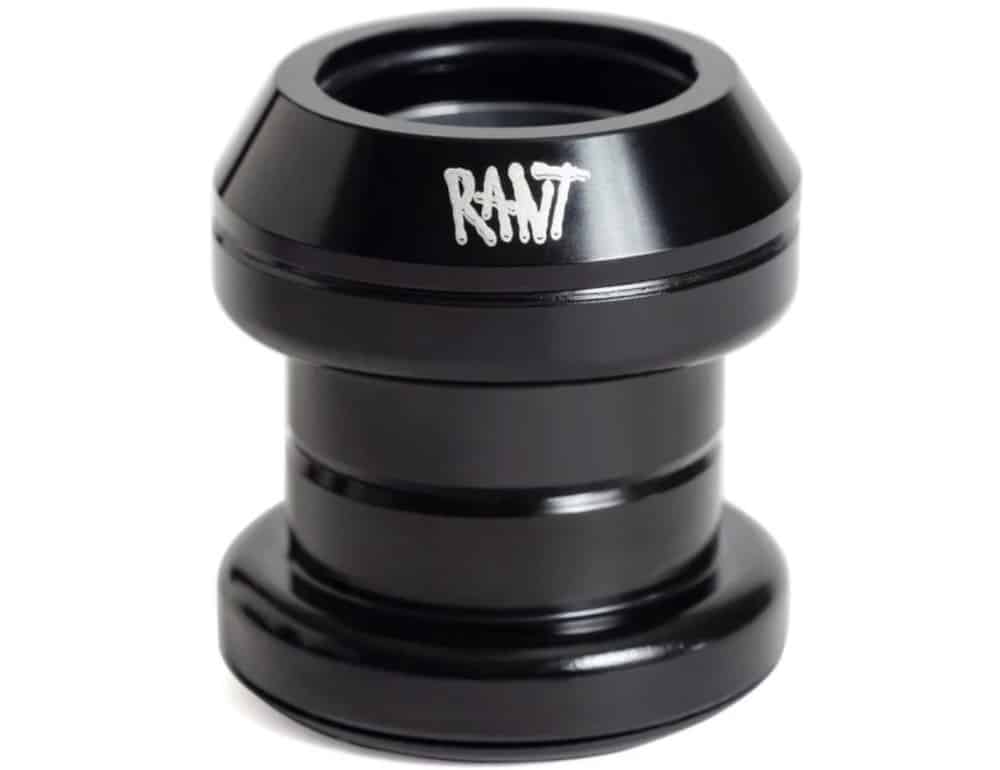Did you see there are different BMX headset types and are trying to figure out what the deal is?
I’m happy to share with you this ultimate guide to reveal all the ins and outs of BMX headsets.
First, a headset is a bearing system that connects your frame and forks and makes the bar spin. And you tighten it by screwing the fork’s top cap that presses down the BMX stem.
Second, we have two types – the Standard 1-1/8″ (some call it non-integrated) and the Integrated.
Note: If you are into BMX racing, you’ll also notice internal, tapered and conversion headsets, but we’ll stick to freestyle.
This post covers:
- Integrated BMX Headset
- Standard BMX Headset
- Conclusion: Integrated Headset FTW!
- FAQs About BMX Headset Types
I was among the happiest dudes alive when the integrated headsets first came out.
I always had SOME issues with the standard version – maybe because I had a really poor-quality one.
You know, the friend that kept breaking the bearings, always trying to catch the little balls flying everywhere? That was me!
It sucked big times!
Luckily, the modern standard headsets are high-quality and durable, but those fit only specific, old-school frames (or very low-quality, budget frames – don’t get these!).
All the newer frames adopted the integral headset. Yup, it’s so much easier to install and it lasts forever (if you install it right).
BUT!
What is the difference between an integrated and a standard headset BMX?
BMX Headset Types
| Headset type | Description |
| Integrated | The bearings sit directly in the frame’s head tube without needing cups |
| Standard | The bearings are housed in external cups that press into the frame’s head tube |
Integrated BMX Headset

Even though this wasn’t the first headset, it quickly became widely popular once it was brought to the market.
And this is all for a good reason. First, it’s a lot lighter compared to a standard headset.
The integrated one doesn’t need the extra cups you see on a standard one.
Why?
Because the frame has the necessary angles for the integrated bearing machined right into it.
You don’t even need to hammer it like you do the standard’s cups, which makes it super convenient.
You pick the top and the bottom headset bearing and install them into the frame by hand.
The only thing you need to pay attention to is that the frame is compatible with the integrated headset. Many old-school frames and even lower-priced complete bikes aren’t.
Luckily, it’s hard to mess things up because you “see” the standard headset, but you “don’t see” the integrated one, just the frame’s headtube.
Standard BMX Headset

The main difference between an integrated and a standard headset is the cups.
These need to be pressed into the frame, usually by hammering them. (Use some protection so you don’t destroy them if you beat too hard).
And no, you cannot press the cups by hand.
Unfortunately, these add extra weight, which an integrated headset avoids completely.
The cups then serve as the vessel for the bearings, which could be sealed or unsealed.
From my experience, it’s a big difference if you get a standard headset with a sealed or unsealed bearing – the former is MUCH better.
Still, my conclusion below reveals it all.
Conclusion: Integrated Headset FTW!
You want to avoid the standard headset unless you’re a collector of old-school BMX bikes.
If you’re looking to get a complete bike, an integrated headset is a MUST. Even when it comes to maintenance, it’s so simple.
Hey, some don’t even add any grease (I don’t recommend doing that), and the headset lasts them for years!
I think I don’t really need to say anything else.
Pay attention to the specs; it says what type of headset it has.
FAQs About BMX Headset Types
What size is a BMX headset?
The standard size of all modern BMX headsets is 1-1/8″, which is also the outer diameter of the fork steerer tube. (Sometimes, a BMX racing bike or a bike that has wheels smaller than 20″ can have a 1″ headset.)
What’s the difference between integrated & standard BMX headsets?
Integrated headsets have bearings that fit directly into the frame, while standard headsets use external cups to hold the bearings, affecting both the look, weight and ease of installation.
Can you put an integrated headset on a standard?
No, you cannot. Integrated and standard headsets aren’t compatible.
What is a zero-stack headset?
A zero-stack headset means that it’s flush with your frame. There won’t be any stack between the frame and the stem. This gives the bike a cleaner look, but you’ll need spacers to raise your handlebar.
Are there any performance differences between integrated & standard headsets?
Both types can perform equally well if installed correctly, but integrated headsets tend to be lighter due to the absence of external cups.
Further reading:
- BMX Fork Offset (Beginner’s Guide)
- What BMX Stem Size Do I Need?
- What Are The Different BMX Stem Types?
- How To Choose A BMX Bar






